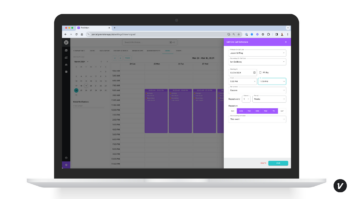Sometimes we try everything to please a customer and still fall flat on our faces. It is true that we can’t please everyone, but it’s very important to develop a strategy for meeting challenging customer scenarios head on. Defining and understanding the difference between reasonable and unreasonable requests can make the difference between profit and loss for any CE company.
Client horror stories abound in our industry and just like many good yarns, there are always three sides to the story: your side, their side, and what actually happened. A colleague recently recounted a client call on Christmas Eve letting him know that he (the client) would be at church that evening and he wanted his children’s new TVs wall mounted while they were out. My colleague politely explained that his employees were home with their own families and weren’t available to do installation work on Christmas Eve. The client flew off the handle and verbally insulted my colleague. The call ended abruptly, and my colleague ended up getting a sheepishly apologetic phone call a few weeks later from his client. Stories just like this one get written every day in any service business.
It’s not a matter of if you’ll experience challenging customer situations; it’s a matter of when. Understanding how to deal with these interactions boils down to understanding the customers’ motivation and figuring out how best to engage them. Most challenging customer stories begin with one of the two following scenarios:

It’s important to define reasonable vs. unreasonable levels of customer service for your company.
Scenario 1: The client is upset and has a reasonable concern.
Scenario 2: The client is upset and has an unreasonable concern.
Reasonable versus unreasonable is very subjective, and invariably we end up in a reality-distortion field, in which getting texts at 3 a.m. because our client can’t turn on one of his or her 18 TVs is normal, and we should respond immediately. Without a strategy to engage clients and set realistic expectations, we’re doomed to rinse and repeat.
Let’s begin by defining what reasonable and unreasonable are for your company. There are no right or wrong answers here. Be careful how you proceed because your findings will shape the type of customers you attract (for better or worse).
Should you answer text messages from clients after hours? Should you answer some but not all of them? What drives what’s responded to and what isn’t? Are there different rules for the owner of the company versus on-call staff? Whatever you decide, put it in writing and communicate it to your employees and clients. Common sense should prevail. Every rule is made to be broken. If a key client needs something and they perceive it to be reasonable, is it worth betting the relationship?
What about unreasonable requests? Armed with your definition of reasonable, surely anything not explicitly listed is unreasonable, right? Not so fast. Again, here’s another highly subjective category to define. Surely we can set some loose guidelines here. If it’s illegal, immoral, will cause harm to others, or features abusive behavior, can we call those unreasonable requests? An industry veteran would be quick to jump in here and lay the common sense rule again at our feet. Go with your gut. If it feels wrong, check with a colleague, friend, significant other, or supervisor and use him or her as a sounding board.
Now that we’ve defined reasonable and unreasonable, let’s figure out what type of outcomes we anticipate:
Outcome A: We can resolve this customer’s concern
Outcome B: We can’t resolve this customer’s concern
In Outcome A, we feel good about getting the customer’s concern resolved. Patience is a critical skill in these situations and we want to make sure the client feels heard and that we care about his or her needs. Listening goes a long way in these situations. Try recapping the client’s frustration by using this format as an example: “I heard you say the TV is playing sound, but you can’t see a picture; is that correct?” You’ll be amazed at how effective repeating back customers’ own words to them is in getting them to calm down. They feel listened to and validated. That’s half the battle. Ultimately, patience, tenacity, and a thick skin will win the day with resolvable concerns.
In the Outcome B (the worst kind), we may not discover we’re there until we’ve exhausted ourselves bending over backwards to make our client happy. This past week, I found myself in this scenario with a client who had previously been a big fan of our company. Out of nowhere, she accused me of disrespect and dishonesty and became verbally abusive. She wanted us to install product in her house that she hadn’t paid for. She later sent a scathing email to me and copied a few of my staff berating me further. I took the email to our all-hands meeting the next morning and put it up on our projection screen. I encouraged our employees to weigh in on what we should do next. I let them know there weren’t any right or wrong answers. My employees blew me away with their emotional intelligence and insight. Some of their comments included, “Don’t show her where she’s wrong” and “Offer to refer her to someone else within our company.” She called in later that day and began to berate other members of my staff. We then realized that we couldn’t do anything to resolve her concerns and decided to refocus our efforts on the remaining 99.9 percent of our clients who love us.
Most customer concerns are resolvable, and a few are not. By defining reasonable versus unreasonable and keeping a vigilant lookout for customers who might be unresolvable, you’ll go a long way to cutting down on drama in your business. Drama is not good for the bottom line.
Stay frosty and see you in the field.







